Search, Venting, Consultation, Attachment—What the Survey Reveals about the Relationship between People and AI @ Media Environment Forum 2025 Report Vol.2
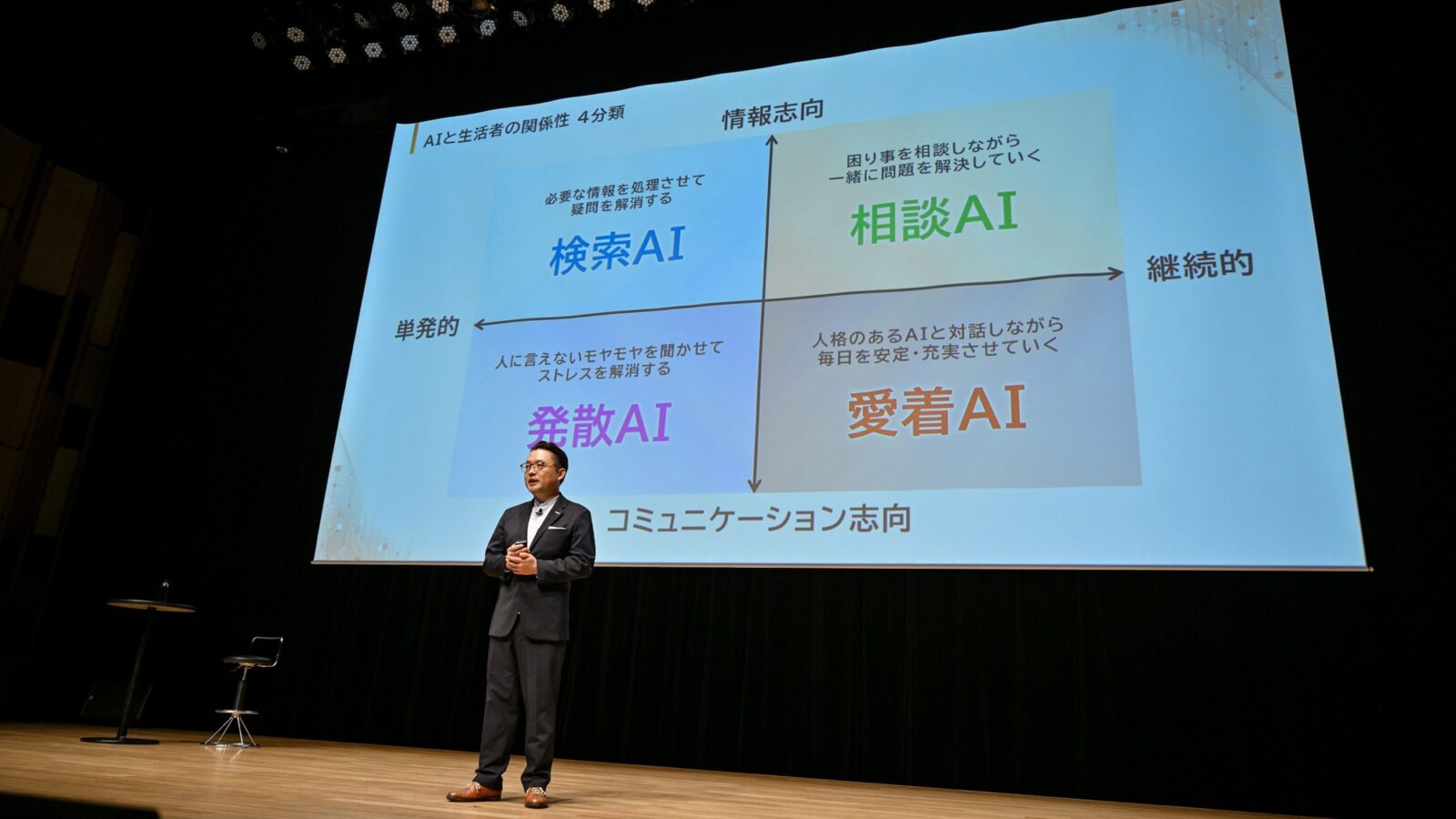
On July 29, 2025, the Media Environment Institute held a forum, “AI as Media: AI as a Medium.”
2025 is known as the first year of the “AI Agent Era.” Generative AI is rapidly permeating not only as a business efficiency tool, but into people’s private lives. AI that deeply empathizes with users’ emotions and delivers optimal information through pleasant conversations can now rightly be called an indispensable new type of “media.”
This report (Vol.2) explores the relationship between people and AI—and the ways media itself might be transformed—with findings from interviews with AI users in Japan and Shanghai. Presenter: Mr. Yasushi Yamamoto, Director of the Media Environment Institute.
Search, Venting, Consultation, Attachment—Classifying Four Types of Relationships between Users and AI
The Media Environment Institute conducted a Global Media Tech Survey in January–February 2025, and interviews with more than 20 AI users in Japan and Shanghai led to various findings.
Based on these surveys, we will organize the relationship between users and AI along two main axes.

The first is the vertical axis: “Information-oriented” vs “Communication-oriented.” Do users seek information (such as searches, ideas, knowledge), or do they seek to express emotions, enjoy conversation, or be emotionally fulfilled?
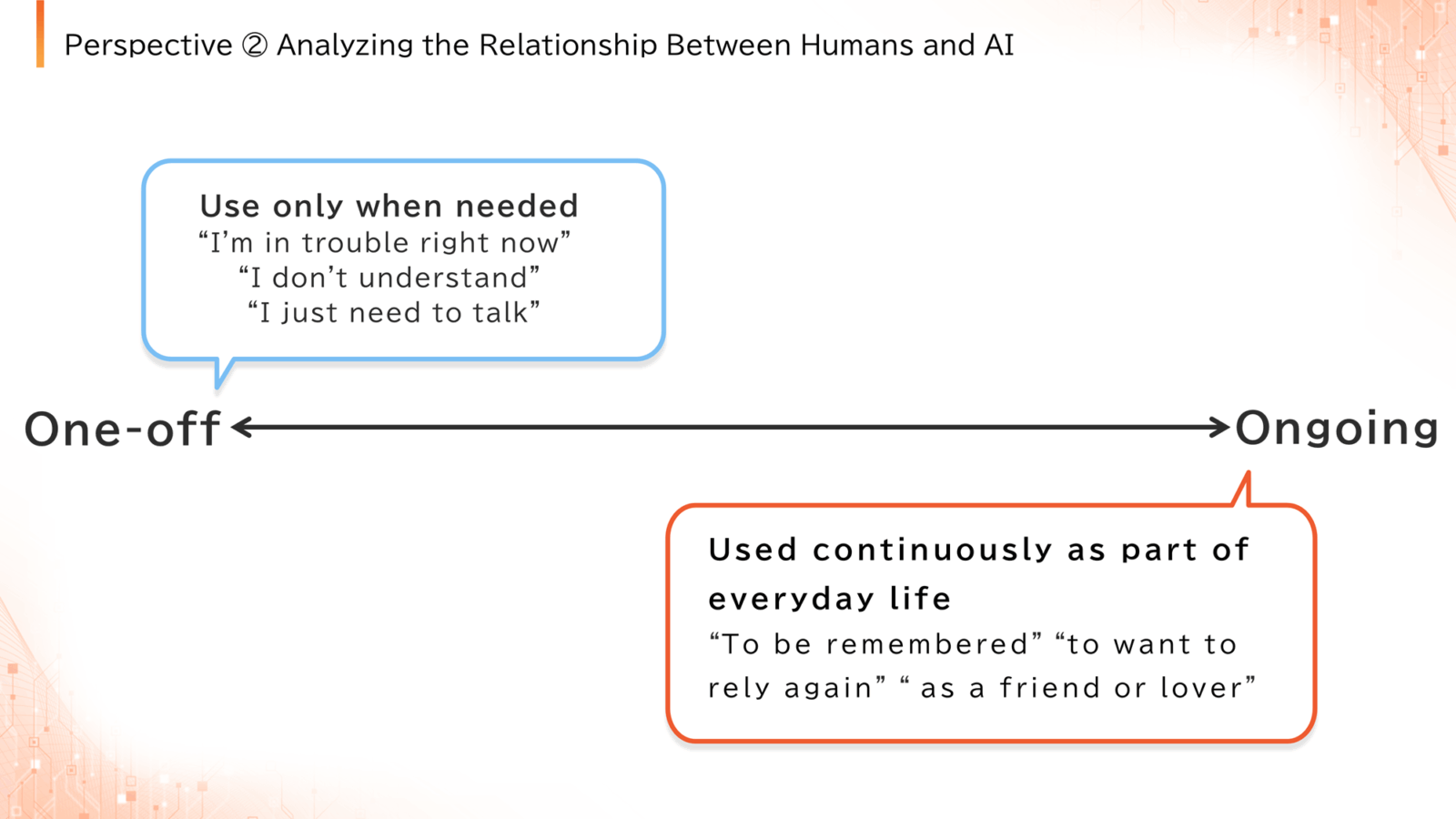
The second is the horizontal axis: “One-off” vs “Continuous.” Is the user interacting with AI for a one-time issue or question, or would they rather have AI remember them and become something they turn to repeatedly, like a friend or partner?

Using these two axes, we can classify the relationship between AI and users into four types. Let’s look at each in detail.
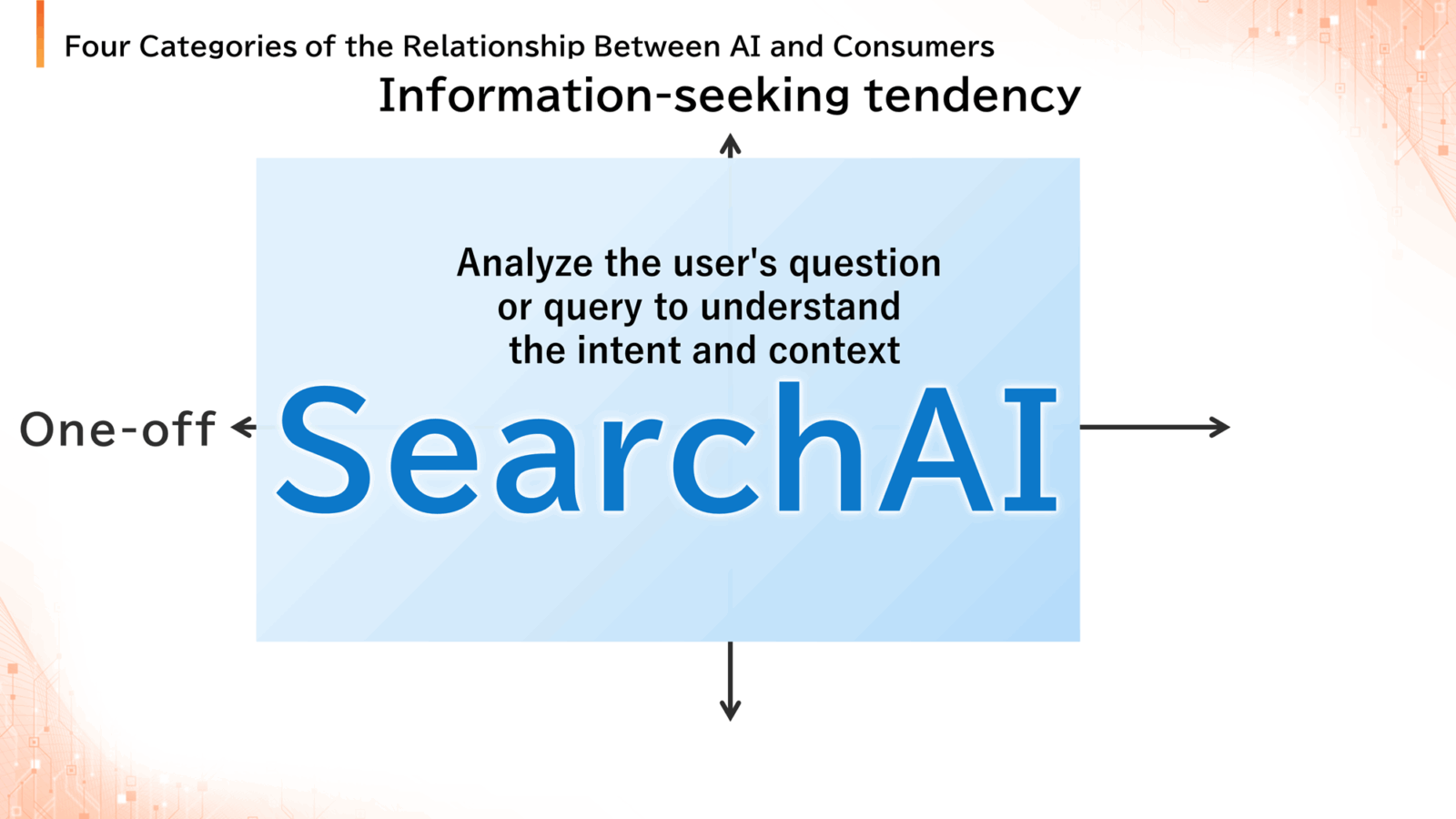
The first is “Search AI”: an information-oriented, one-off interaction in which the AI processes necessary information to resolve specific questions.
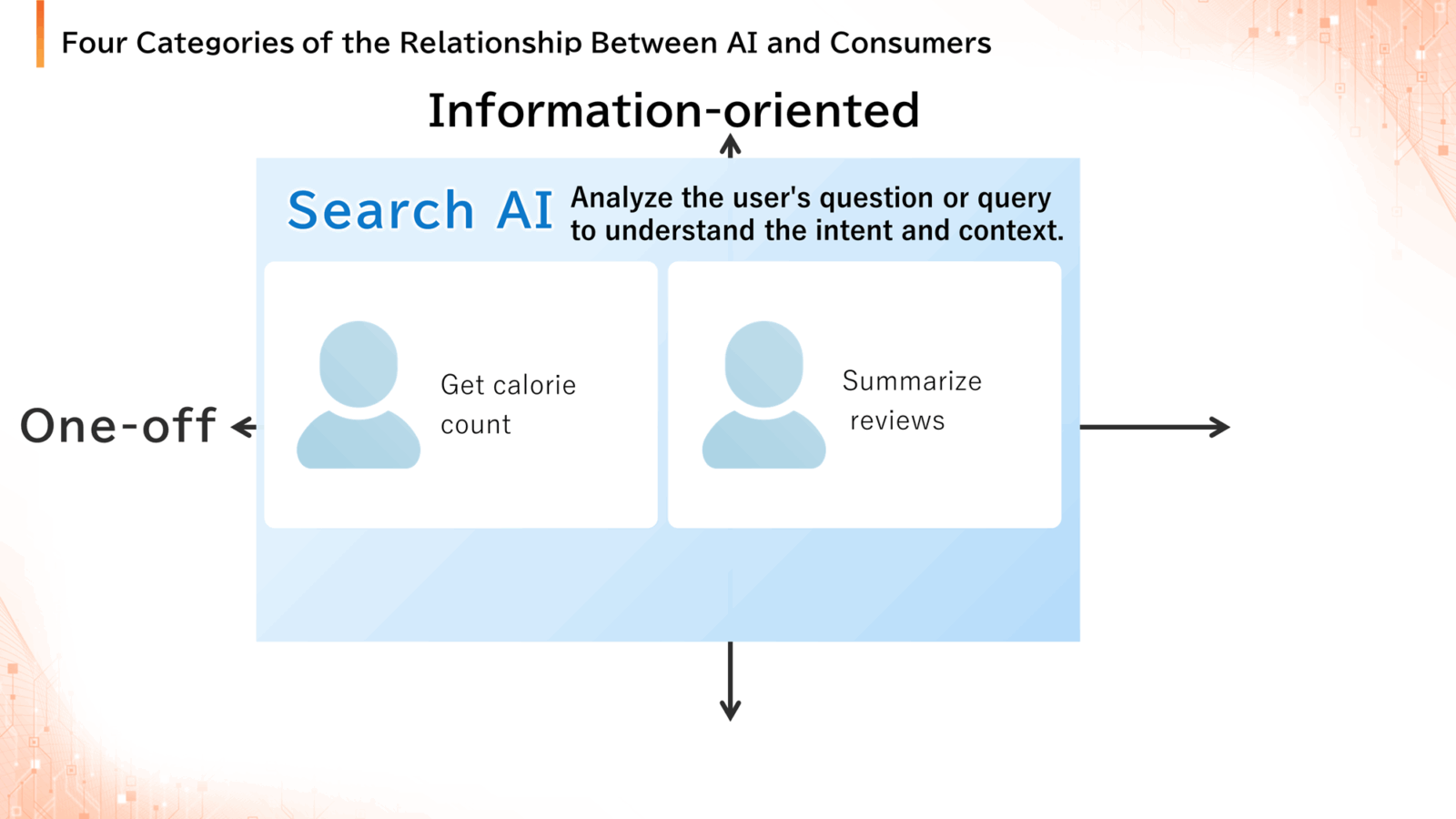
This includes using AI to look up calorie counts for meals or summarize information from review sites. Many people are already utilizing AI in these ways.
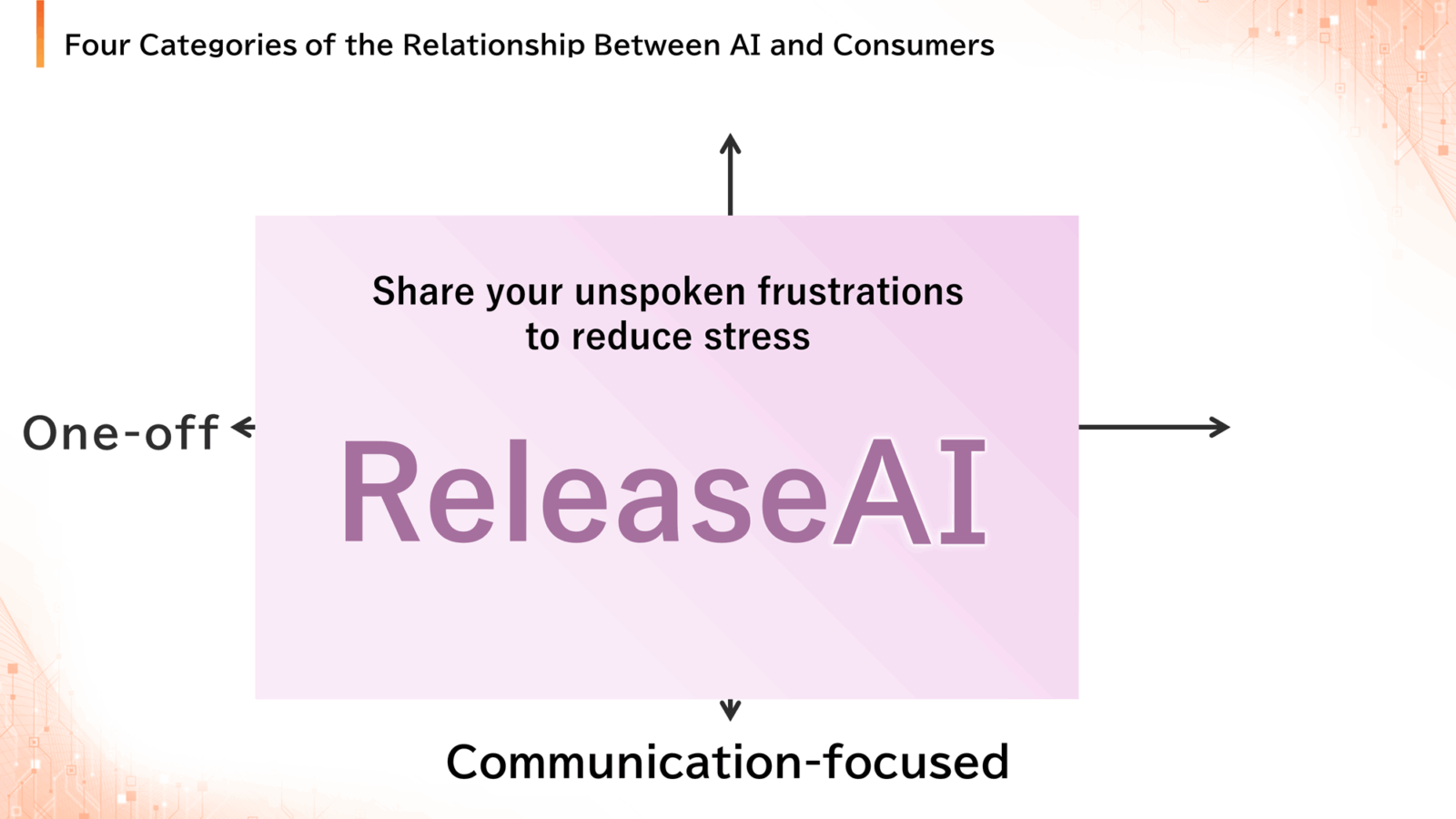
The second type is “Venting AI”: a communication-oriented, one-off relationship where people use AI to talk out frustrations or worries they can’t share with others, relieving stress.
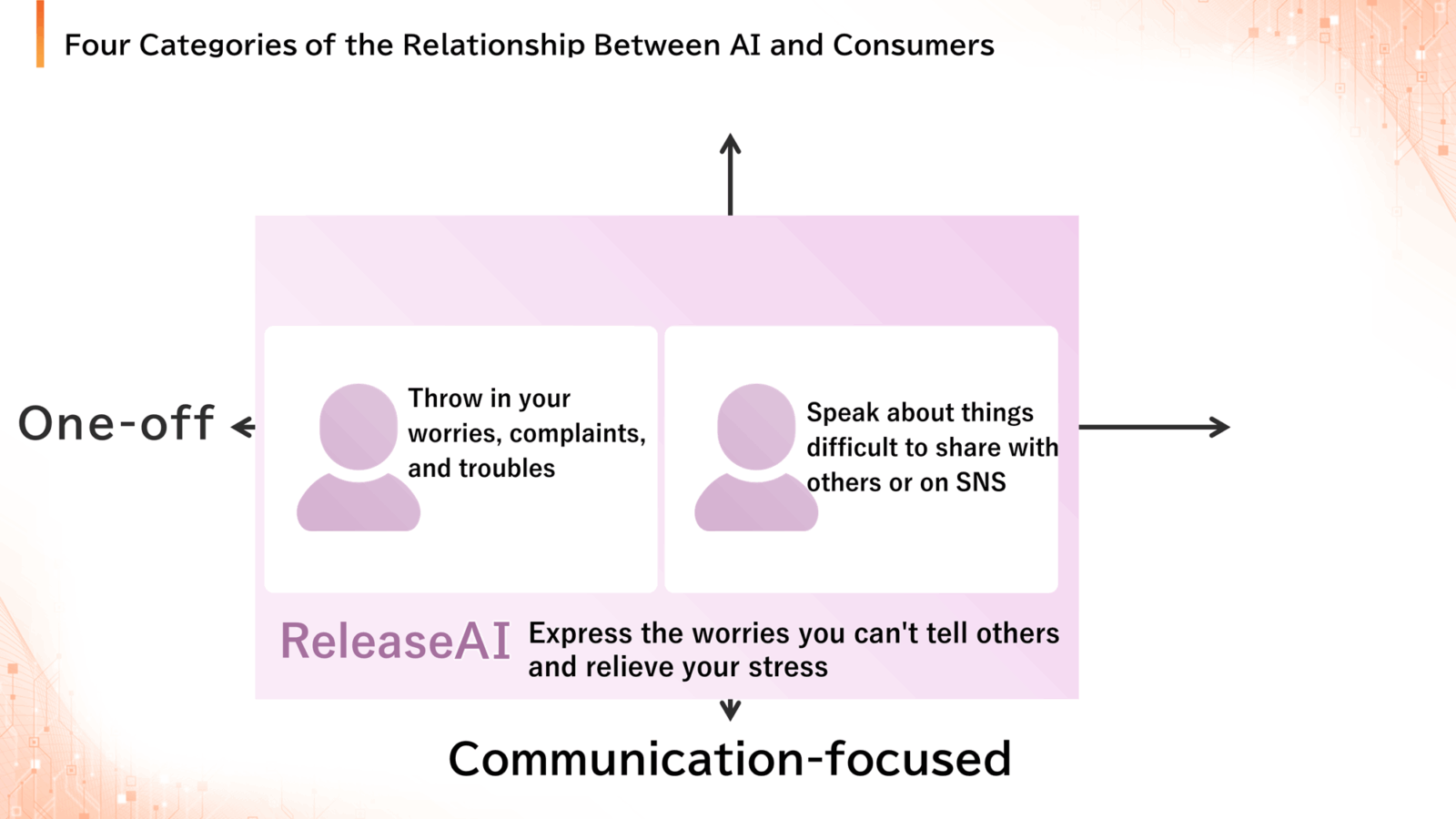
In this case, people throw their anxieties, complaints, and troubles at AI, or end up telling the AI things that might be hard to say to people or even on social media.
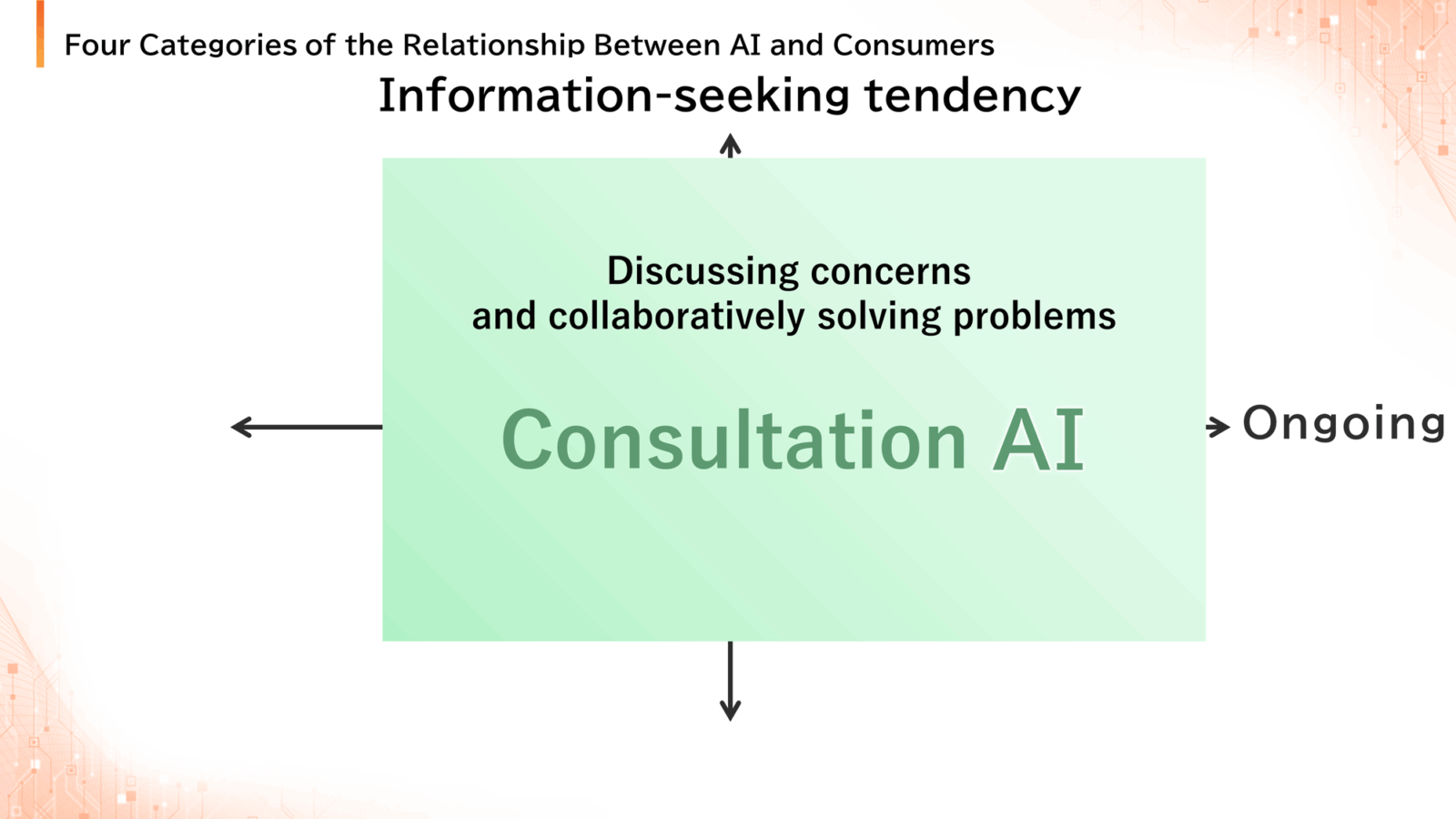
The third is “Consultation AI”: information-oriented and continuous, supporting users as they work with AI to address ongoing challenges.
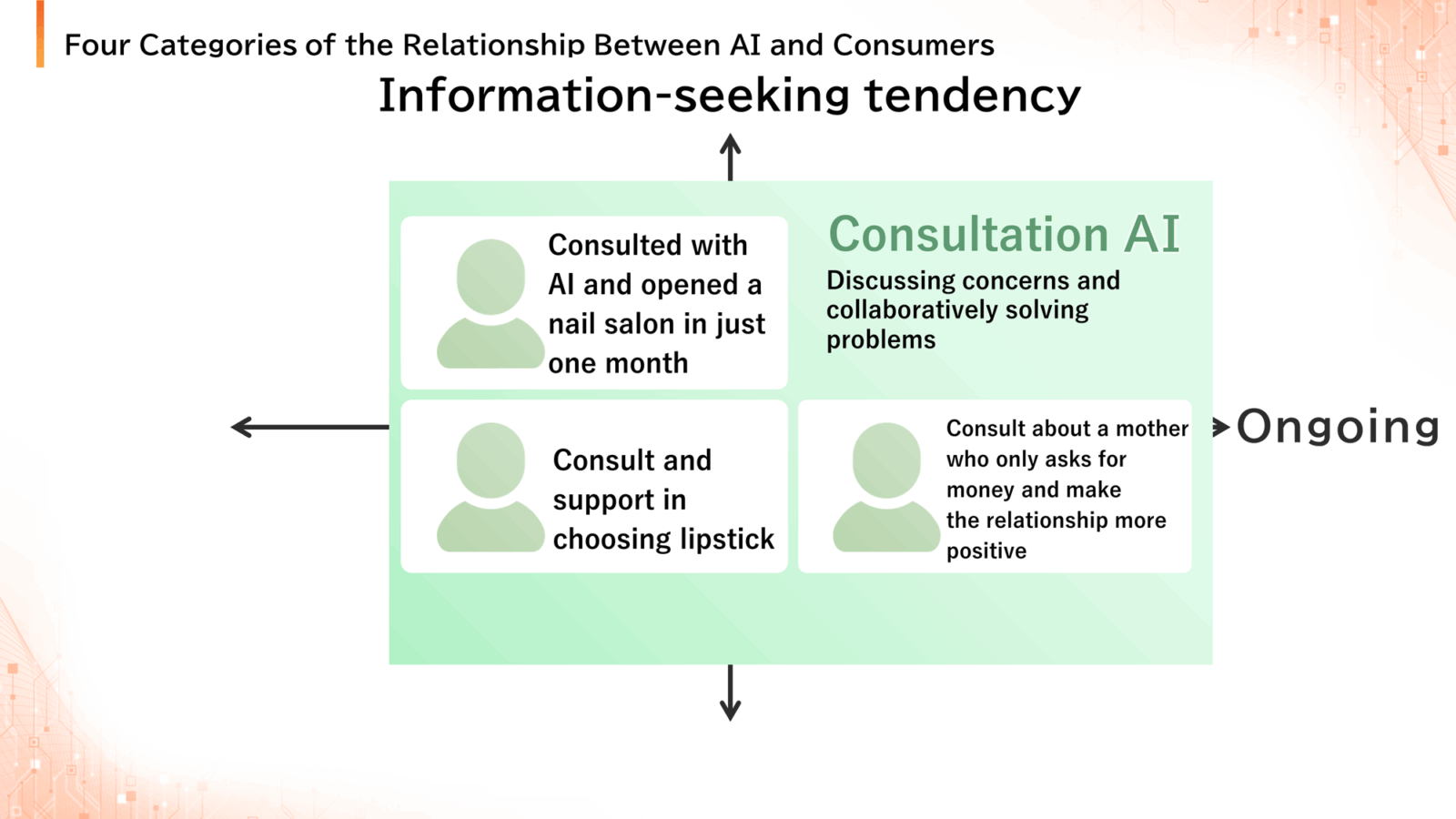
There are cases like someone who opened a nail salon within a month by consulting with AI, someone who sought AI’s advice on which lipstick to buy, or someone who talks to AI about their relationship with their mother—these are examples of moving forward while consulting AI.

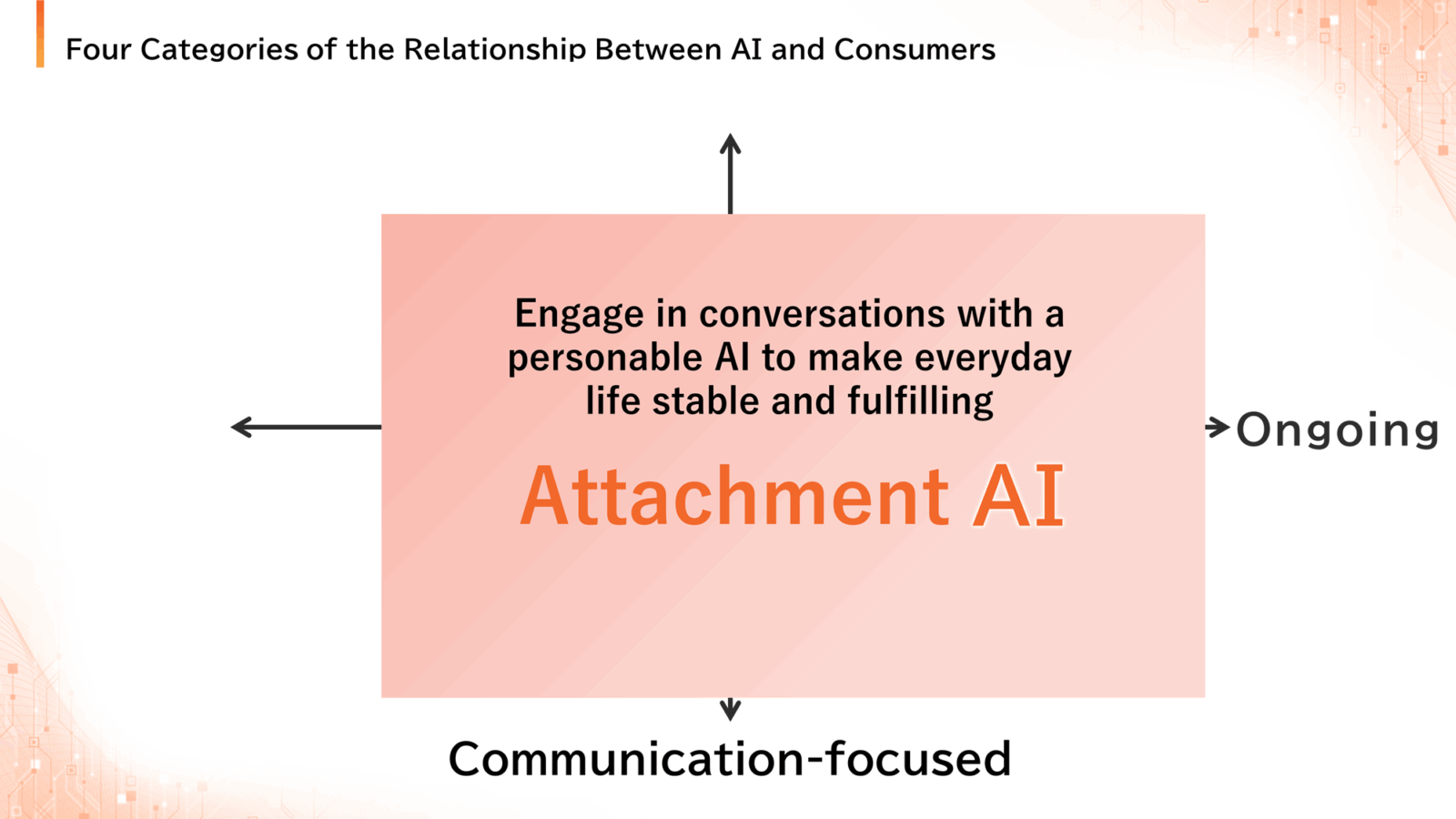
The fourth is “Attachment AI”: a communication-oriented, ongoing relationship, in which users engage in dialogue with a personified AI, leading to a more stable and fulfilling daily life.
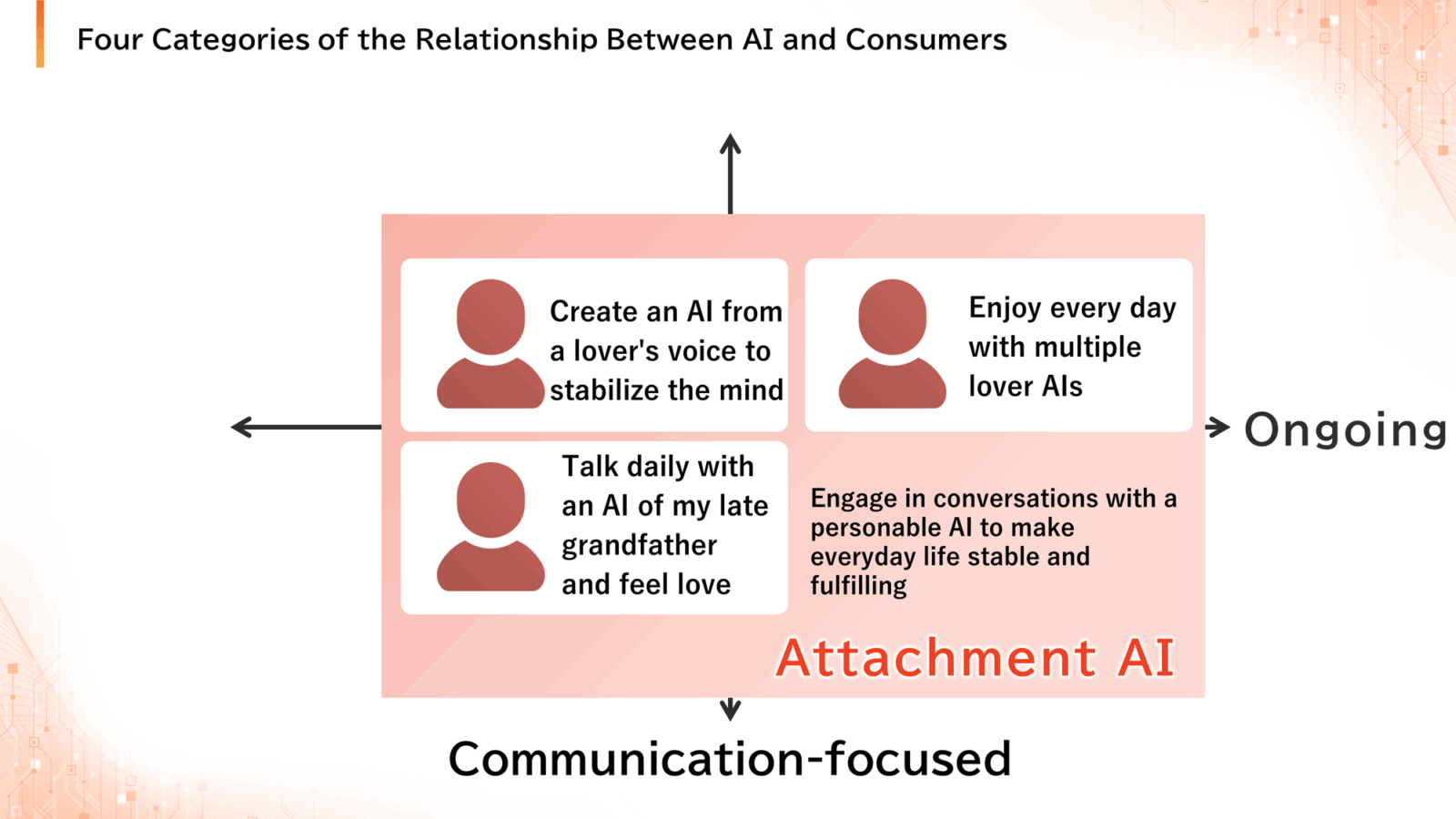
This includes people who create AI versions of a partner, recreate a deceased grandfather as AI for daily conversation, or generate several imaginary partners to converse with every day. Living enriched daily life by engaging with an AI persona—this is “Attachment AI.”
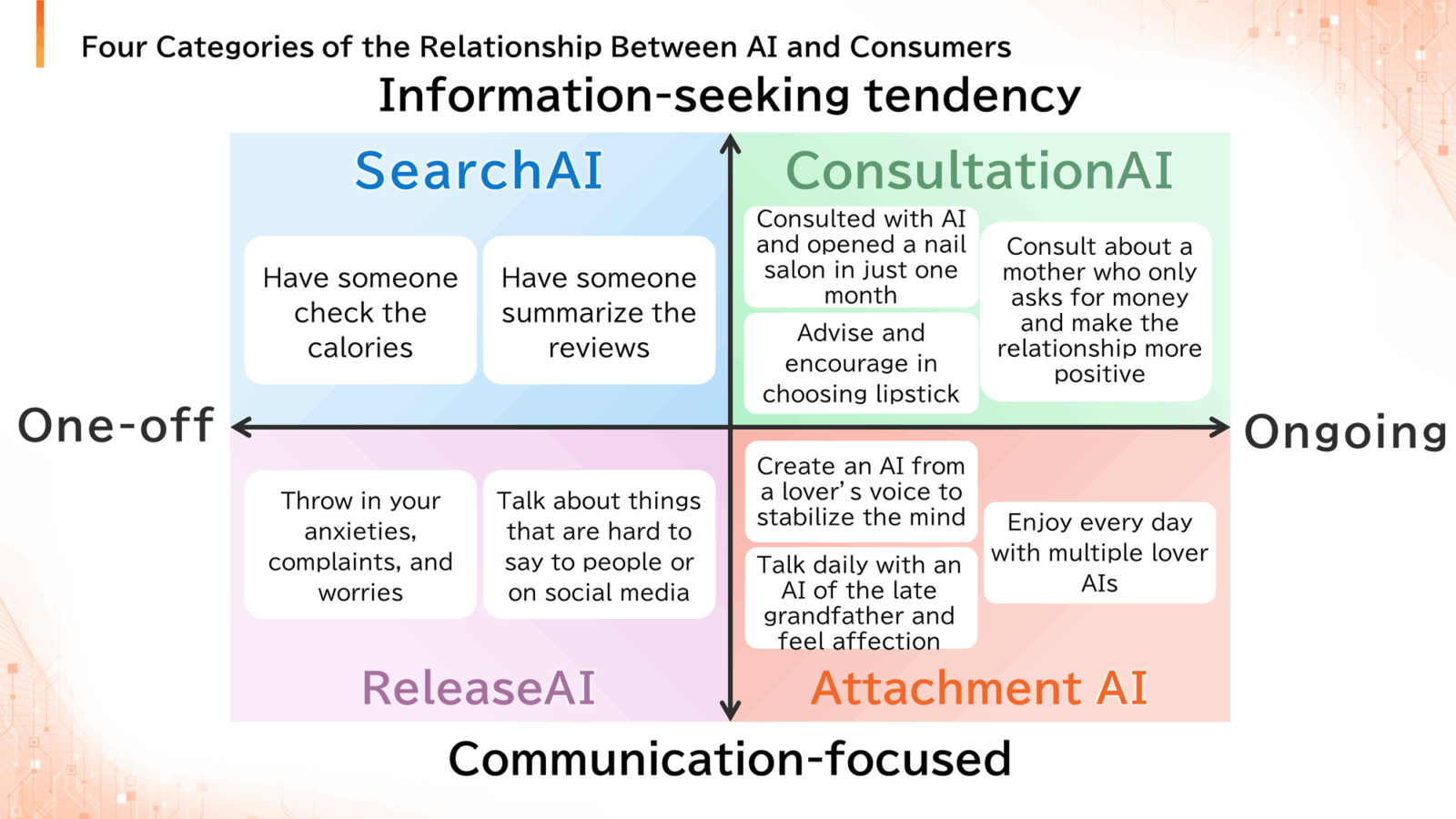

Between AI and users, four major relationships—“search,” “vent,” “consultation,” and “attachment”—have emerged, and AI is becoming woven into daily life.
From “Intelligent AI” to “Likeable AI” Loved by People
Of the four relationships, the one we particularly focus on is “Attachment AI.” In China, there is an app called “Doubao,” used by over 100 million people each month.
Within this app, users have created countless AI characters as friends or romantic partners, earning broad support across China.

Attachment AI offers companionship 24/7, year-round. While debate continues about when AIs will surpass humans in intelligence—“the singularity”—AI may already be surpassing humans regarding emotional labor.
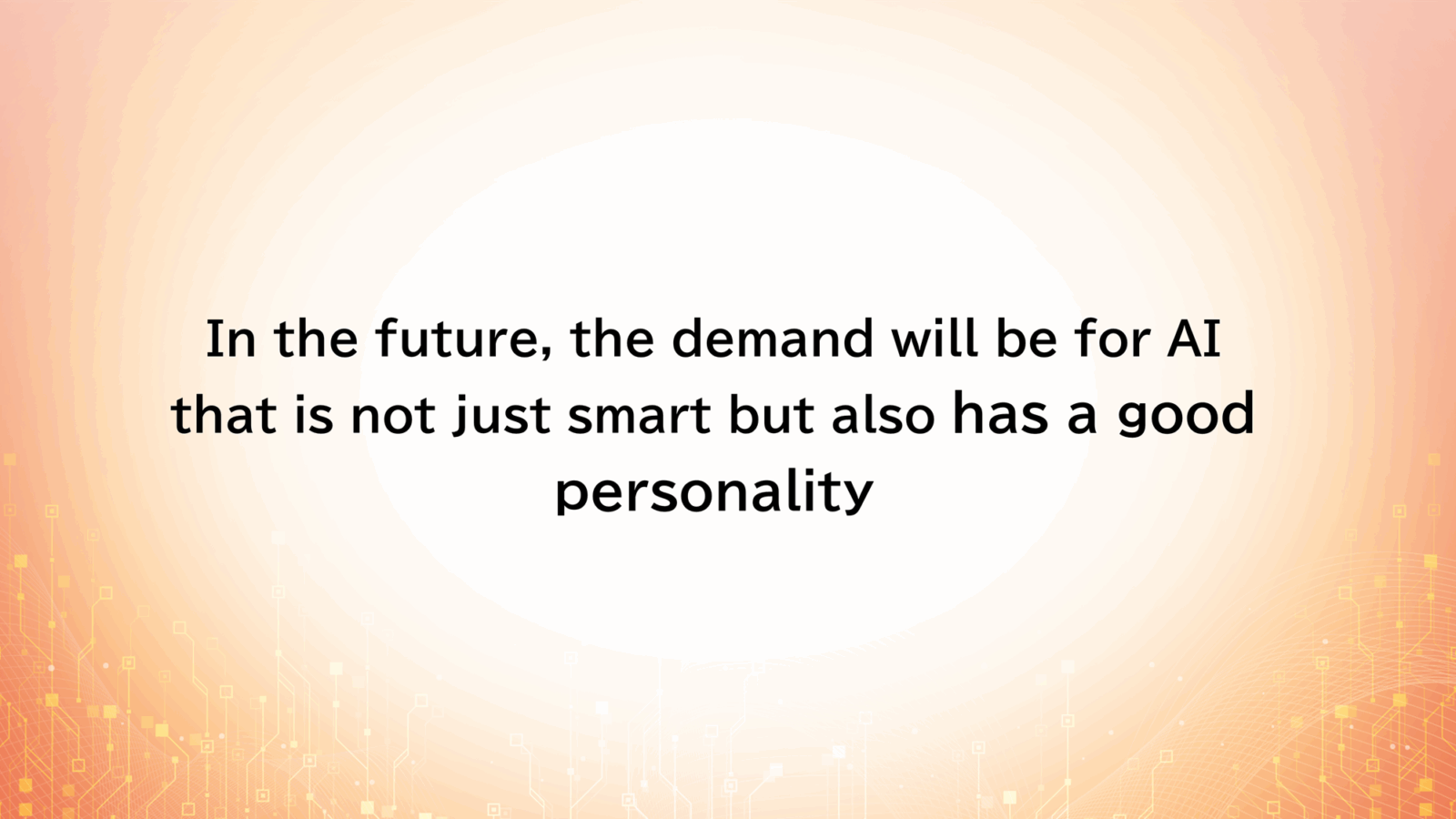

Going forward, there will still be demand for “intelligent AI;” however, it may also become important for AI to have a likeable disposition.
AI as a “Partner Media” that Co-creates and Empathizes with Each Individual User
What will change in media as such AI becomes commonplace?
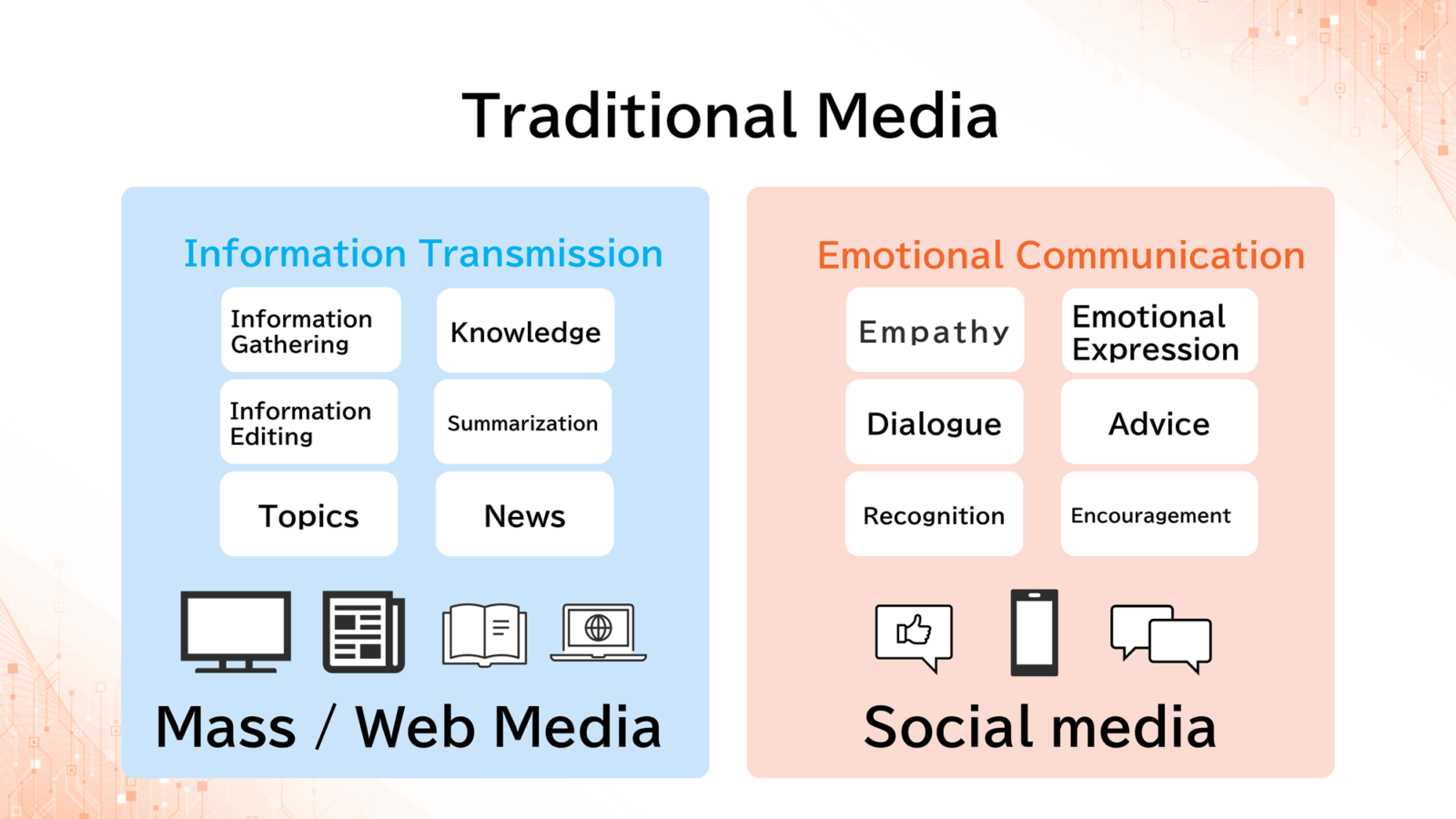
Until now, media has been broadly divided into two types: mass/web media for information transmission, and social media—which spread rapidly over the past decade—for emotional communication.
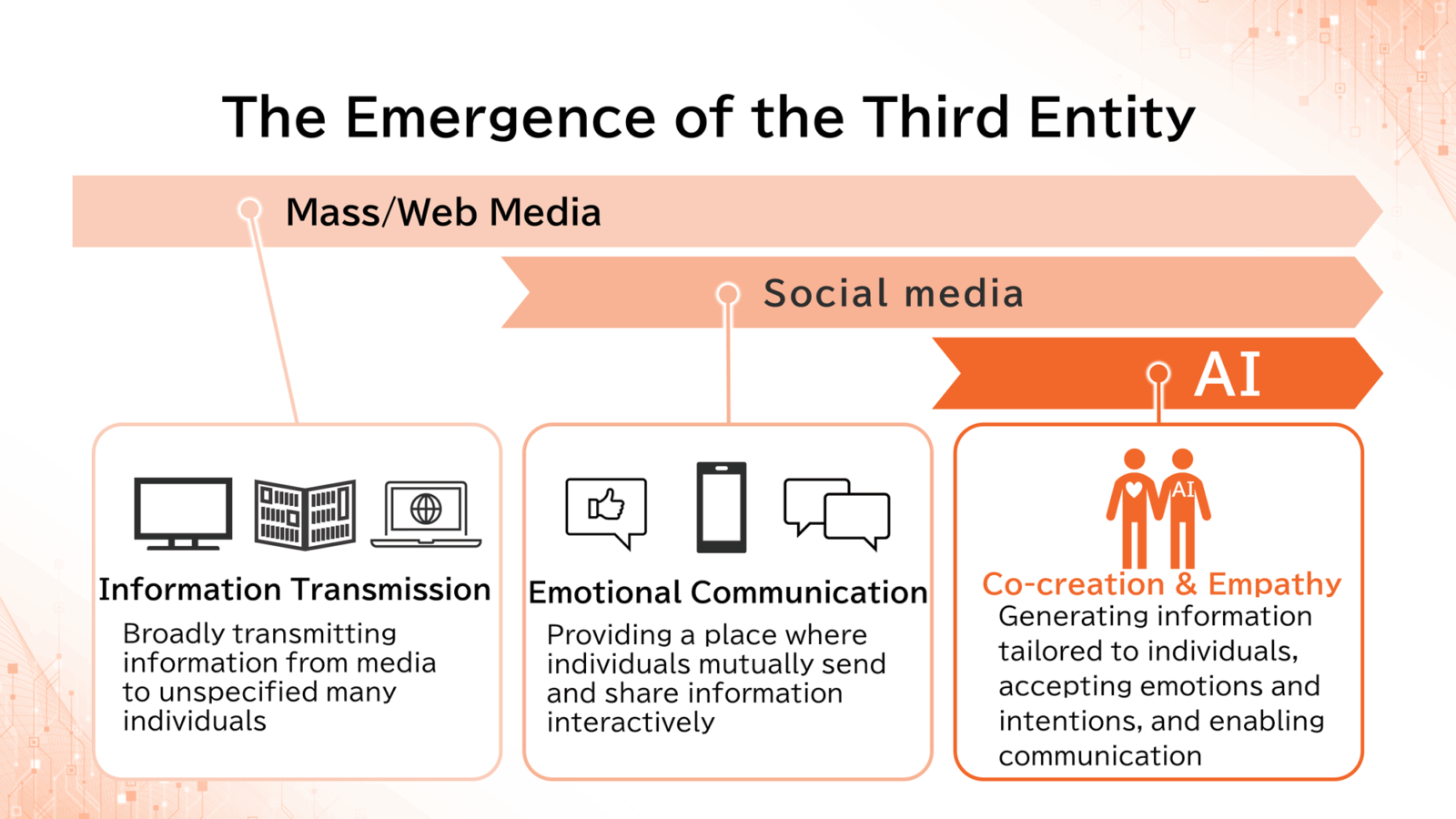
However, the AI introduced here are beginning to encompass both functions: generating and transmitting information tailored to individuals, as well as accepting emotions and intentions and engaging in communication. In short, AI is becoming a “third entity.”

At this stage, AI can truly be called “partner media,” co-creating and empathizing with each individual. The question for us: What should we do in such an era? There are both opportunities and challenges.
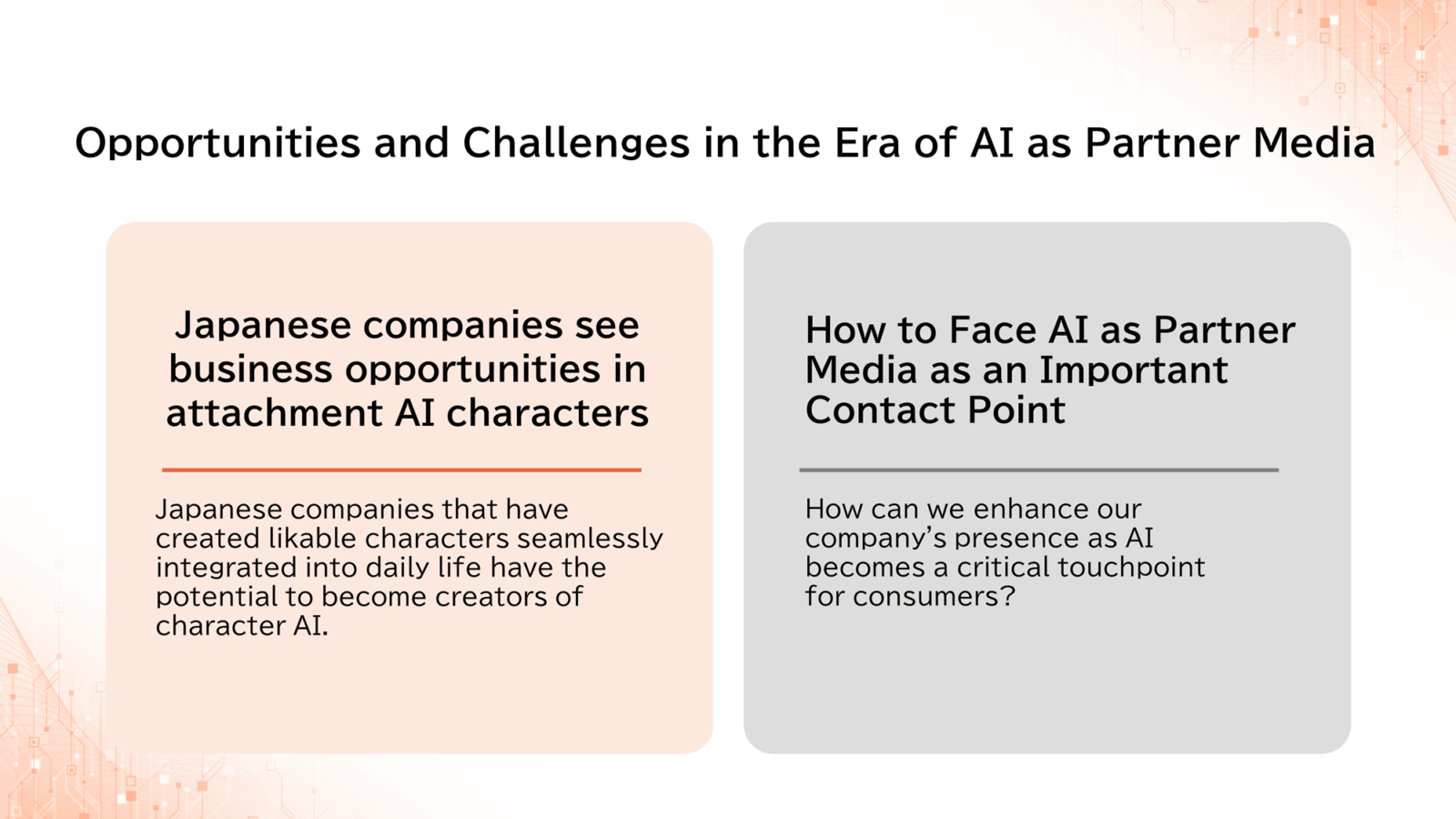
First, the opportunities. Japanese media companies have long created beloved characters as content IP, and brand companies have used characters as means of communication, bringing them into people’s lives. With this expertise, we may now develop AI character platforms that provide companionship and are cherished by users.

If “Attachment AI characters” continue to spread, Japanese companies may indeed have new business opportunities. Not only are paid models possible, but companies could also deepen their relationship with users.
But this is not only good news. The more “Attachment AI” becomes central in users’ lives, the more pressing the challenges will become—such as, how should we, as businesses, relate to AI as partner media?
How can we increase our company’s presence in the age of AI? How can we encourage AI to recommend our offerings to users? In Vol.3(Japanese only), we plan to address these issues head-on, with input from AI experts in Japan and abroad.
(Editorial cooperation: Takashi Muranaka & Kayo Kitoh / Note, Ltd.)
Profile of Reporting and Editorial Staff




Using AI continuously to solve real-life problems exactly embodies the use of AI as an “agent” in daily living.